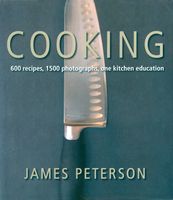Advertisement
Thyme
Appears in
Published 2007
Thyme may be second only to parsley in usefulness in the kitchen, though it is employed very differently. It can be used in three ways: slowly simmered in liquids so that its flavor is integrated with the flavors of the aromatic vegetables; chopped and added to sauces or other liquids just before serving for a sudden burst of direct flavor; or chopped and sprinkled on meats or seafood headed for the grill. Until recently, thyme was rarely available fresh, but now you can find it in the market year-round. You will seldom need a whole bunch, but since it dries easily without losing its character, this isn’t a problem. Use only what you need and tie the rest of the bunch on one end with string and hang it in a cool spot in the kitchen to dry. When it is thoroughly dried, rub the sprigs between your palms, letting the leaves sprinkle down over a steak or chop to season it. You may also want to slip fresh thyme sprigs down the neck of an olive oil bottle to give your salads a little herbal flavor. Several thyme varieties are available, including lemon thyme. Don’t substitute lemon thyme for regular thyme. Its aggressive lemon flavor is mildly reminiscent of furniture polish.


